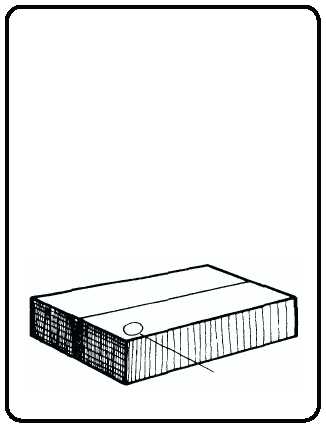| |
OUTSIDE WRAPS FOR BOXES
Wrapping paper equivalent to the strength of the
average grocery bag may be used to wrap parcels.
(Wrapping paper is not required, nor recommended by
the USPS, if the box itself is an adequate shipping
container.)
ENVELOPES
Envelopes may be used as containers for articles
when they can reasonably be expected to be handled
and delivered without damage to the contents or other
mail. Letter-style envelopes are flat envelopes that
meet the minimum and maximum size requirements.
Envelopes of this type are not reinforced and are
acceptable as containers for nonrigid stationery and
material of a similar nature that does not exceed l
pound in weight and l inch in thickness. Envelopes
exceeding the size for letter style and made from
extra-strength materials are acceptable for easy loads
up to 5 pounds.
FIBERBOARD TUBES AND LONG
PACKAGES
Fiberboard tubes and similar long packages are
acceptable provided their length is not more than l0
times the girth (diameter) of the article. Tubes are ideal
for mailing rolled items such as unframed paintings,
documents, fishing rods, and so forth. If the tube is of
the two-piece type, where one end slides into the other,
tape must be applied to completely encircle the seams
where the two pieces are joined. The ends of tubes may
be closed by crimping or with tape only if the contents
are rolled lightweight items. Otherwise, the ends
should be closed with a material as strong as that of
which the tube is made.
CANS AND DRUMS
Cans and drums are acceptable if they have
positive closures (the top screws on, is secured by
bolts, clamps, and so forth). Generally, friction
closures by themselves are not acceptable. Devices
that are closed with locking rings that stick out must be
padded to prevent injury to mail-handling personnel,
equipment, or other mail. Cans and drums should not
be sacked or pouched regardless of their weight. They
must be dispatched as outside mail (OSM) to make
sure that equipment or postal personnel are not injured.
Q3-1.
What are the three types of packaging loads
used in the transportation industry that are
recognized by the USPS?
Q3-2.
An average load, as defined, weighing 20
pounds requires a fiberboard box of what
burst strength?
Q3-3.
Packages with surfaces that will not retain an
adhesive postage meter impression are not
acceptable for mailing. (True/False)
Q3-4.
Paper wrappers should not be used when a
p a rc e l ( b o x t y p e ) i s m a i l e d i f w h a t
circumstance exists?
Q3-5.
Fiberboard tubes and similar long packages
are acceptable for mailing provided their
length does not exceed what amount of the
girth (diameter)?
Q3-6.
What type of closure must a metal can or drum
have to be accepted for mailing at a military
post office?
Now turn to appendix 1 to check your answers.
3-3
Select the
Proper Container
Strength
Certificate
Fiberboard containers are generally strong enough to
ship material of average weight and size. These are
the common boxes which are readily available in the
home, supermarket, hardware store, etc. An
"average" parcel may be defined as one which is no
more than 34" X 17" X 15" and weighs 25 pounds or
less.
with automated parcel processing.
Fiberboard strength is indicated on the box,
manufacturer’s strength certification printed on the
bottom of the box. This certification is usually a round
imprint with four numbers noted.
These are the dimensions normally associated
PCf0302
Figure 3-2.—Test burst strength shown on a fiberboard box.
|

